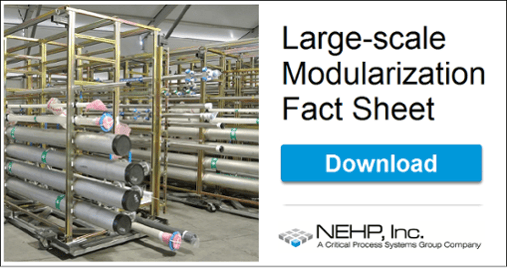Eliminate Inventory Waste and More with Just In Time Construction Delivery
JIT Delivery, or just in time in construction, is an inventory management approach designed to eliminate waste by "receiving goods only as they [are needed] for production processes." [1] While JIT delivery is most often correlated with combating the issue of inventory waste, it is also perfectly applicable to the elimination of D.O.W.N.T.I.M.E and all of the 8 wastes of lean construction.
In construction processes, inventory waste is generally the result of unnecessary stockpiling of materials due to over-estimating and over-ordering. But it can also include and lead to the unnecessary use of said materials, thus translating to a whole host of wasted effort, time, and material.

The concept of just in time in construction is derived from the Toyota company’s revolutionary system of lean manufacturing; where production input is determined on the basis of actual demand. As with many factory-based lean manufacturing principles, JIT delivery is becoming increasingly assimilated into lean construction methodologies.
In a construction scheduling context, JIT requires alignment and balance between project items that are considered "long lead" and those that are more readily available. As a result, specialized Supply Chain Management (SCM) personnel are required for ensuring that all materials are present and readily available when needed. This means that the SCM must factor lead times into the process, creating a system where materials are pulled, rather than pushed through the process.
Estimating material needs and "pushing" them through a project is inefficient and prone to error, often resulting in wasted effort, time, money, and supplies.
The JIT method also requires that suppliers and contractors collaborate at a higher level than in regular construction methods and it requires that all project supplies are up to standard. This helps to prevent project delays due to unusable materials and helps to ensure that contractors deliver a higher quality product with reduced defects and maintenance needs over the life of the product.
As you can see, with proper implementation, the Just In Time method will not only eliminate inventory waste, but will promote project alignment, unity and forethought which in turn helps to combat all of the 8 wastes of lean construction (as shown by the D.O.W.N.T.I.M.E. acronym below):
- Defects
- Overproduction
- Waiting
- Non-Utilized Talent / Resources
- Transportation
- Inventory Excess
- Motion Excess
- Extra Processing
In the end, this will result in happier employees, more satisfied customers and smoother operations across the board.
With some reports indicating that 90% of the world’s infrastructure projects run over-budget and over-schedule [2] it becomes clear that an overhaul is needed in the planning, execution, and mindset of construction management.
The Just In Time delivery method can assist with this overhaul and is a powerful tool for improving construction productivity. Any construction firm that fully understands a project’s needs, and knows it can meet expectations on time and within budget is immediately far ahead of the industry curve.
If you would like more information about construction productivity improvement, please feel free to access our large-scale modularization fact sheet below:
OR
Visit Our Lean Construction Integration Page Here
Sources:
[1] https://www.investopedia.com/terms/j/jit.asp
[2] https://www.economist.com/business/2017/08/17/efficiency-eludes-the-construction-industry

